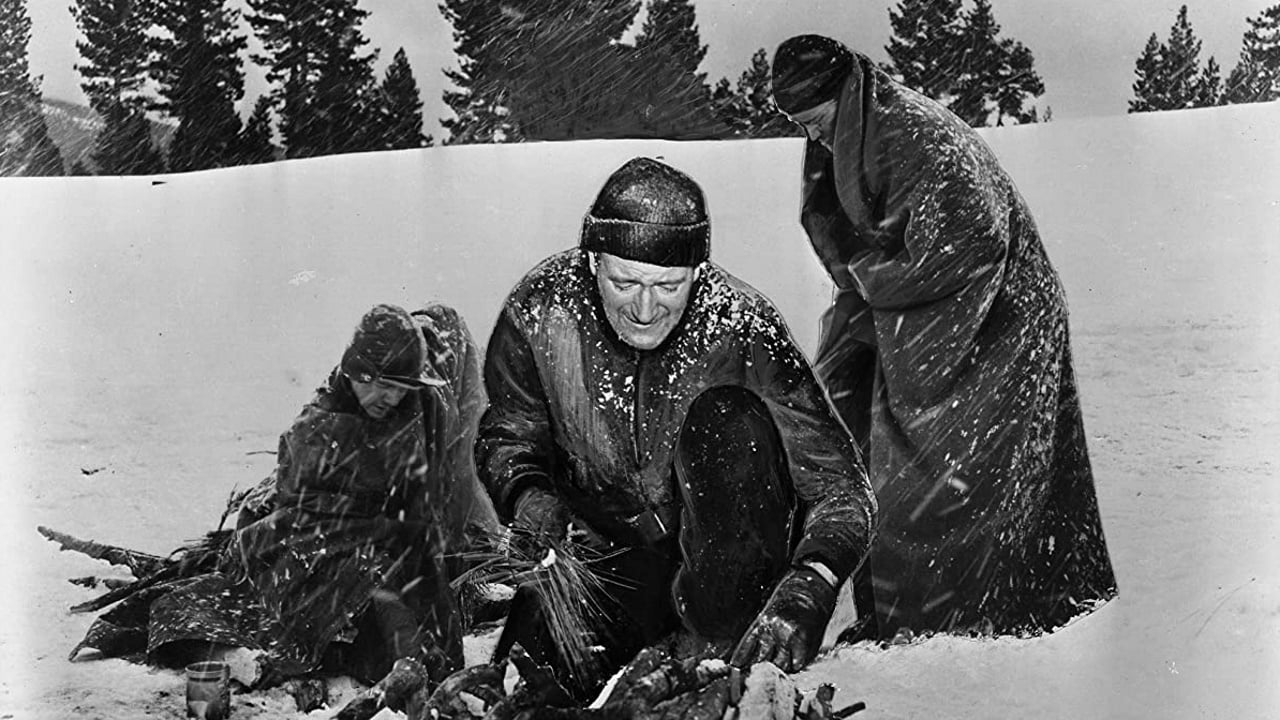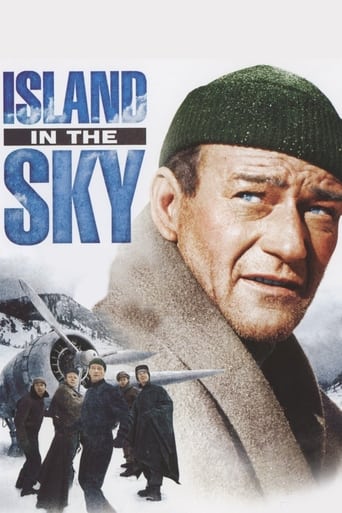

Although it has its amusing moments, in eneral the plot does not convince.
... View MoreThe movie is wonderful and true, an act of love in all its contradictions and complexity
... View MoreWhile it doesn't offer any answers, it both thrills and makes you think.
... View MoreThe film's masterful storytelling did its job. The message was clear. No need to overdo.
... View MoreGenerally excellent adaptation of Ernest Gann's 1944 novel of the same title. A C47 transport plane attached to the Army Air Transport Command, is making a winter return trip, via Iceland and Labrador, to the US. But, over Labrador, heavy icing of the wings necessitates an improvised landing on a small lake in an uncharted region of northern Quebec. Unfortunately for rescuers, there are many many small lakes in this region to chose from. The downed crew manage to get a few very brief messages out before their generator completely fails. These are picked up by the army base on Presque Island, Maine, which repeatedly sends out a rescue squadron of 4 or 5 planes, with only a vague idea of where to look, and knowing that a downed plane will be extremely difficult to spot, without periodic radio contact with the crew. Thus, much of the film deals with desperate attempts to achieve even minimal radio contact, often with merely an emergency 'coffee grinder' transmitter, which cannot receive messages, can only send Morse code, and which requires continuous strenuous hand cranking to generate enough electricity for a transmission. It may have been difficult and uncertain, but that transmitter proved the difference between success and failure.At one point, there was much debate on whether the rescue planes should try to cover the same ground as the day before or explore a new area. The latter choice was finally agreed upon. But, it was wrong, as the next transmission from the downed crew would indicate. For, they had spotted several rescue planes the day previously, not far from them. Although magnetic compass readings were unreliable in this area, and there was a lack of definitive ground markers to help tract their flight course, with the help of several subsequent brief transmissions, the rescue team finally spotted them, but missing one man, who had wandered out in a blizzard and become lost and frozen. The film ends with the rescue planes dropping food and other supplies, before flying off. Unclear to me why they couldn't land and take the men home?? One thing I noticed that bothered me was the inability to see the moisture from their breath at these supposedly -40 to -70 degrees. Also, they didn't look all that uncomfortable without arctic clothes and with minimal blankets. Otherwise, it looked like the landscape and snow was real?This story, based on a real incident, reminds me of a somewhat similar incident occurring in the glacier-filled high Andes, as related in the book "Miracle in the Andes". The pilot got disoriented in a spat of bad weather, went off course, and grazed a mountain top, tearing various parts of the plane away from the main fuselage, which landed relatively intact on a glacier, and which served as their home for the next 2 months or so. Because they had landed off course, and their radio could not transmit, only receive, rescue efforts proved futile. Thus, they were only saved by the coming of warmer weather, allowing the strongest to climb over a mountain and trek down a valley until a person was contacted. The others mostly survived until a rescue mission could be launched. See this film in B&W at You Tube
... View MoreWilliam Wellman's direction of an adaption of Ernie Gann's book of the same name starring John Wayne as "Dooley".Based on a true WWII incident which Gann was party to - the pilots of the Air Transport Command can't believe that "Dooley is down!" - somewhere in the frozen wastes to the North West of track, somewhere in the uncharted mountains. Dooley is their best pilot. If Dooley is down - what hope for the rest of them? Their commander agrees and writes Dooley off. Some of the men almost mutiny and insist on a search for one of their own.The film opens with perhaps one of the best depictions of a DC3 getting iced up till she is too heavy to fly and a desperate descent through cloud - hoping for the best - and miraculously breaking out at "lake minimums" (meaning just time to get the wheels down) before touching down on a frozen lake. While played for Hollywood effect - the wing boots busting off the ice and it clattering down the sides of the fuselage as the plane sinks into the clouds give the opening of the film a real sense of drama.The rest of the film slows right down and portrays just how hard a search and rescue attempt was back in the day - and even is now. The crew have lit a signal fire - but when on top of a hill realize themselves just how pitiful a signal it is.The hand cranked emergency radio uses hundreds of precious calories in order to send out a homing signal. The crews in the aircraft can barely hear it due to thunderstorms, static and competing AM radio stations on the same frequency.John Wayne as "Dooley" plays a remarkably understated "John Wayne" and is quite believable as a vulnerable pilot in command - sure of some of his decisions and instincts about staying put till help finds them while being remarkably unsure of himself. A very unconventional role for John Wayne.The crew on the ice are overflown and overlooked and start to die of the cold. What now for Dooley and his remaining men?
... View MoreFor professional pilots, their planes are their island in the sky. Capt. Dooley (John Wayne) pilots his military transport plane. He and his crew are traveling back across the Atlantic. Off the coast of Labrador, icing forces him to land. The survivors struggle in the frozen north as his friends scramble to search for him.The movie tries a few jokey scenes which are too broad and ill-fitting. Around half of the movie is spent on the search party. I would have preferred more John Wayne in a John Wayne movie. As for the crash site, I'm guessing it was filmed up in the Californian mountains. It doesn't look cold or threatening enough other than those scenes where they bring out the wind machine. It would help to see their breath in the air. There should be more tension although the search is fairly compelling. This works for the most part.
... View MoreThis is a typically adequate John Wayne mid-50s, mid-career action film which will probably last in the memory for just two reasons: a haunting death scene in the snowy wastelands of Canada, and the sight of Andy Devine in swimming trunks. Thankfully, Speedos weren't around in 1953, but it's still certainly a sight to see.John Wayne plays Captain Dooley, pilot of a transport plane who is forced to land in the vast snowy tundra. To make matters worse, the plane's battery is quickly fading, and bad weather is closing in This kind of plot is such a bulk-standard commodity of 50s Hollywood that it's to the film's credit that it manages top hold the viewer's attention without ever becoming dull. Perhaps the film's biggest drawback is its use of studio sets that look unconvincing, especially when contrasted with the location shots. John Wayne broods and rages against the elements and hides his anxiety from the usual united-nations crew. A young James Arness plays one of the team of pilots searching for Wayne's downed plane and he looks like a kind of John Wayne-lite. Director Wellman, who would work on another Ernest K. Gann story, The High and the Mighty, with Wayne in 1954, manages to manufacture a reasonable level of suspense despite the failure to generate any life-in-peril sense of desperation amongst the stranded crew.
... View More